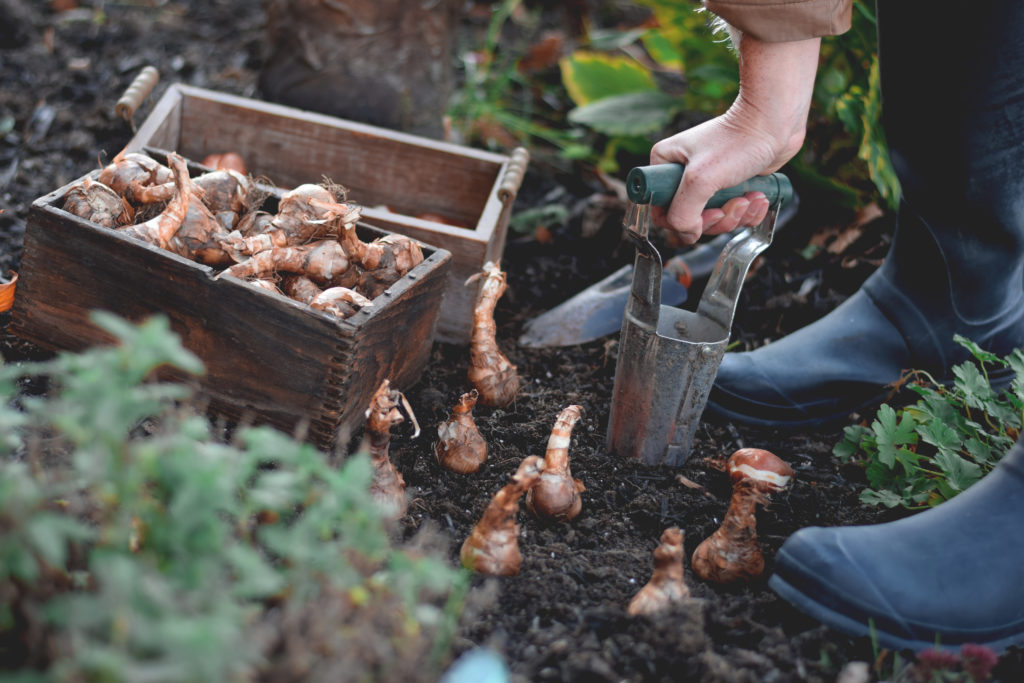“In the spring, at the end of the day, you should smell like dirt.”
— Margaret Atwood
What a glorious time of year spring is, with new life bursting forth in bewildering shades of green, early flowers abuzz with insects, and hedges and woodlands lifted with song. These sights and sounds prick our senses and push us outside to embrace life anew, to savour the world, to reconnect with earth.
Science is showing that regular access to nature is good for us. Nature connectedness lifts our mood, speeds recovery from ill-health and stimulates our senses to increase creativity and productivity. Gardens and other green spaces close to our homes and workplaces can provide places where we experience the rich diversity of planet earth, but this is becoming increasingly difficult as our beleaguered wildlife is forced to retreat to more remote and protected parts of our country. In this biodiversity crisis we must do all we can to encourage wildlife, from primroses to bumblebees, into our gardens and greenspaces.
The biggest issue facing our spring flowers is the changing climate.
As the planet warms, winters have become milder and spring is arriving sooner. Spring flowers like crocuses, daffodils and primroses are emerging almost a month earlier than they were only a few decades ago.

This may appear to be a good thing as plants are released sooner from their winter sleep, and we can more quickly celebrate the return of spring, but it does have more negative impacts as spring flowers become more susceptible to frosts or disease. More significantly, this change will continue to upset the delicate balance within complex ecosystems as, for example, later emerging pollinators are unable to find food or bring about fertilisation in flowers which have already gone over.
So, what can we do to get the most out of our spring flowers and encourage biodiversity?
Diversity is the key. Generally, the more complex an ecosystem is the more effectively it can respond and flex to new challenging situations. Diversity in habitats (the places where species live) supports a broader range of species and a multitude of interactions between these species. In these diverse and complex places it is much more likely, for example, that an early emerging bee is able to pollinate our spring blooms.
Adding structure, with deciduous shrubs, longer grass and wilder areas can create areas of dappled light or darker shade where sunlight can warm the ground in spring and, as the canopy comes into leaf, protect the ground from summer drought. Encouraging native species like bluebells, anemones and wild garlic can add swathes of spring colour to your borders and, with the garlic, a wonderful addition to your salads.
It’s worth planting a wide range of different plants to provide variety in size, shape and growing season as this will attract different insects, and other creatures which feed on them. Different flower shapes are suited to different insects. The long, thin tubes of honeysuckle are great for butterflies and, releasing lots of scent at night, are also attractive to moths. Foxgloves are excellent for bees and will provide food for many months as a succession of flowers open on the tall flower stalk. Robust flowers with flat heads like daisies and wild carrots provide lots of pollen and a safe landing zone suitable for a whole range of insects including beetles.
Support for spring bulbs
A common problem with spring bulbs is that sometimes they just don’t flower – their leaves come up ‘blind’ without a bloom.
This is often a result of being planted too shallow so, once the leaves have died back, the bulb should be carefully dug up and planted to a depth at least three times its height.

Sometimes the bulbs just don’t have enough energy to flower, perhaps through overcrowding, or if the leaves have been unable to catch enough sunlight. Removal of the dead flower heads is often beneficial as this will encourage the plant to divert energy from seed production and invest in the following year’s flowers. It’s always best to spare the leaves after flowering and to allow them to splay freely, rather than binding, as this ensures they can capture all the sunlight they need. Wait until they turn yellow and they will pull out easily but, if you don’t like the dying leaves, you could try companion planting to gradually overgrow the bulbs. Catmint (eg Nepeta × faassenii ‘Six Hills Giant) and yarrow (Achilllea millefolium) provide a great complement to daffodils and cranesbill (eg Geranium pratense) works well with crocuses. What’s more, these species are also excellent for pollinating insects.
A rose by any other name…
Moving toward summer the roses start to bloom and introduce a riot of colour to hedge banks and borders. Gardeners are often spoilt for choice when it comes to roses with varieties bred for structure, disease resistance, colour or fragrance. Unfortunately, many of these ornamental roses provide little benefit to pollinating insects as access to pollen and nectar have sometimes been selected out of the breeding process. I prefer to choose some of our native roses like sweet briar (Rosa rubiginosa) or dog rose (Rosa canina). These climbing roses are comfortable in a wide range of soil conditions and are much more resistant to the diseases which plague the fancier blooms. The pale pink to white flowers will keep on coming through the summer bring sweet apple scents to the garden. These native roses will keep giving well beyond summer as the numerous bold bright hips will last well into winter, providing food for birds and mammals.
Author: Terry Smithson BSc in Zoology, MSc in Ecology
Terry is our in-house ecologist. He’s worked in the nature conservation sector for over 25 years and loves all things wildlife, especially hoverflies, beetles, mammals and birds. He’s helped design our BioScapes products so they maximise the recovery of wildlife and he’s happy to offer advice to individuals, schools and businesses on how to boost biodiversity.

